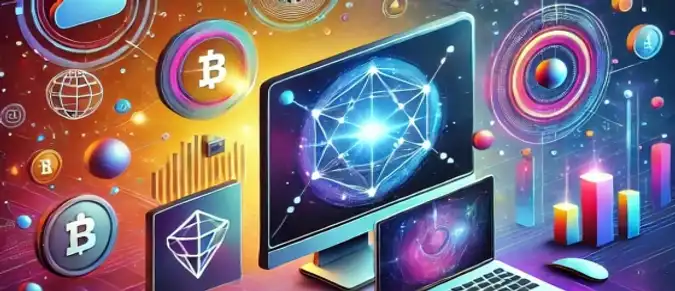In recent years, we have witnessed the remarkable development of blockchain and cryptocurrency technologies, which have become a true catalyst for revolutionary changes across numerous industries. One of the most prominent and significant areas that has undergone transformation is the digital art industry. The emergence of non-fungible tokens (NFTs) has opened up entirely new horizons for artists, allowing them not only to express their creativity in a digital environment but also to monetize their work in innovative and previously unimaginable ways.
At the heart of all these changes and innovations are decentralized applications, better known as dApps. These applications, operating on the basis of blockchain, fundamentally change the traditional ways of creating, selling, and owning digital art. dApps provide users with unprecedented freedom of action and new opportunities for interaction with the digital asset market.
- Platforms for Creating NFTs
- Advantages and Disadvantages of dApps
- Impact of dApps on the Digital Art Market
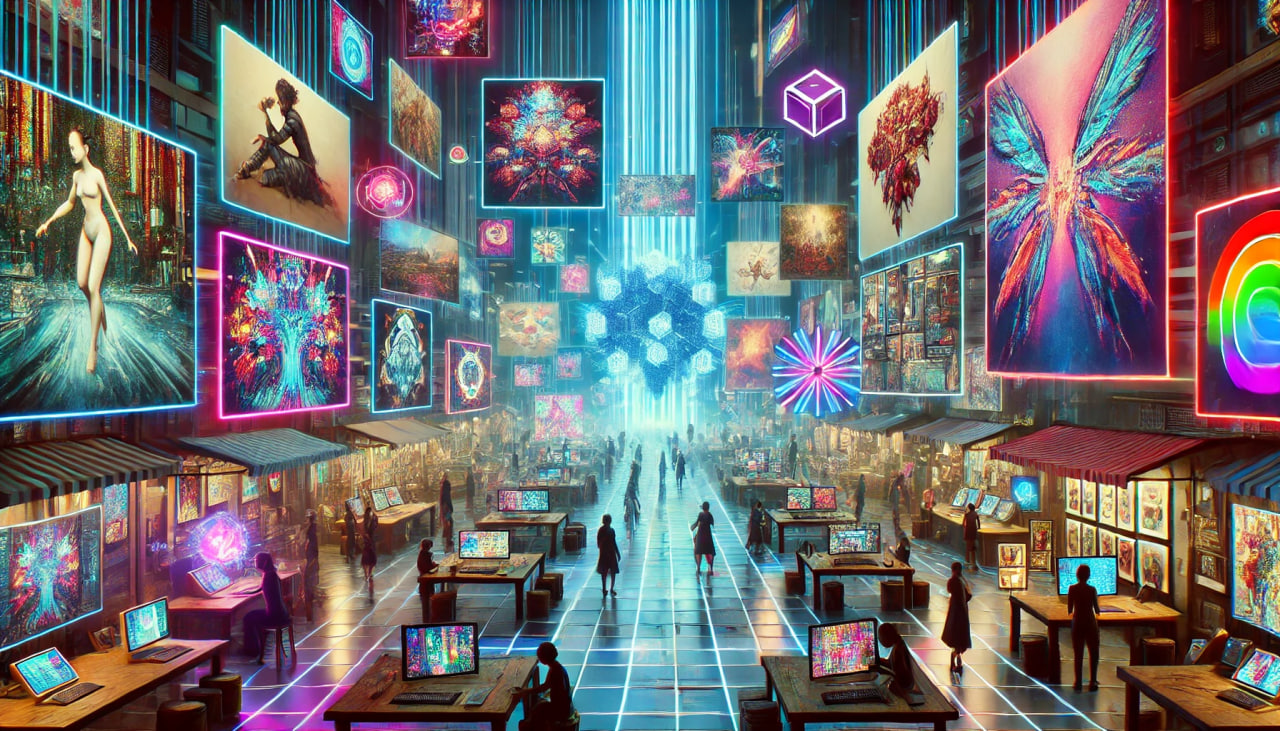
Platforms for Creating NFTs
There are numerous platforms that allow artists to create and sell their NFTs, each with its own unique features and capabilities. These platforms do not simply provide technical tools for creating tokens but also form entire ecosystems that help artists find their audience, interact with it, and receive deserved rewards for their work. Let's explore the top 5 most popular platforms, each playing a crucial role in the development of the NFT and digital art market.
OpenSea
OpenSea is one of the largest and most well-known platforms for trading NFTs, supporting multiple blockchains, including Ethereum, Polygon, and Solana.
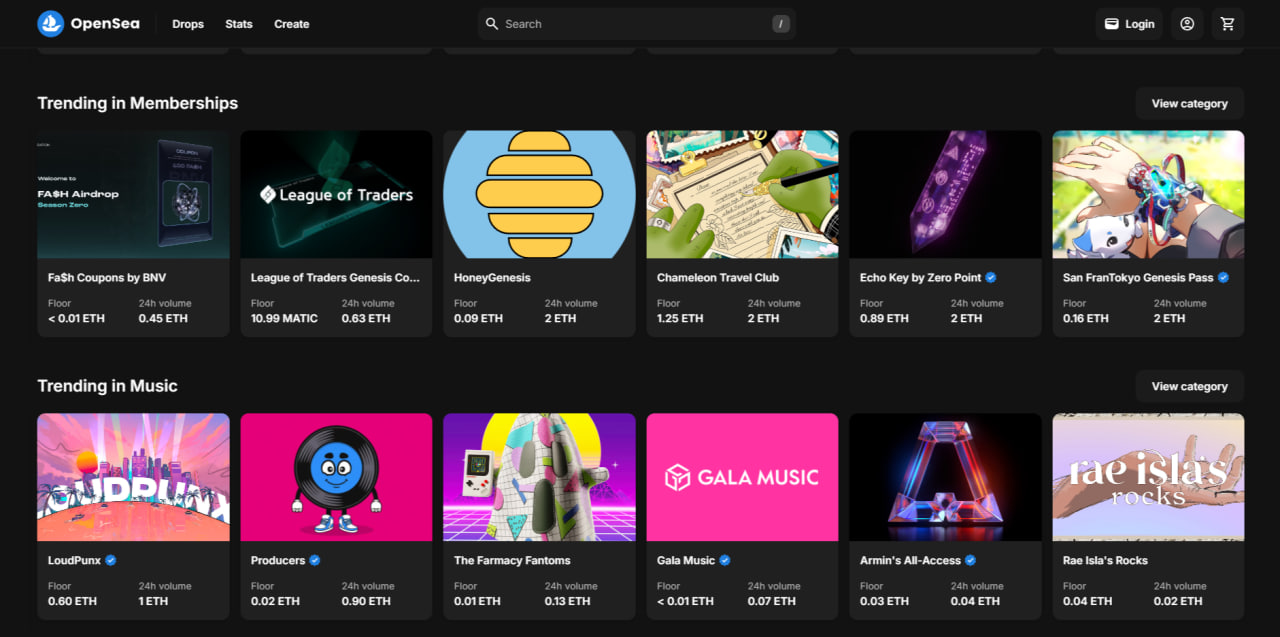
Advantages:
- User-friendly interface and a wide range of options
- The platform is suitable for both beginners who are just starting to explore the world of NFTs and experienced users looking for large markets to sell their works.
Thanks to its scalability and support for various types of assets, OpenSea has become one of the main hubs for trading digital assets, where thousands of transactions are made daily.
Rarible
Rarible is a community-oriented platform that offers users not only the ability to create and sell NFTs but also to participate in the governance of the platform itself. This is achieved through the use of its own token, RARI, which is distributed among active users and allows them to vote on changes and innovations on the platform.
Advantages:
- Democratic approach, attracting artists and content creators who want not only to place their works but also to actively participate in the development of the platform.
- Rarible supports various content formats, including images, music, and videos, making it a versatile platform for creative individuals.
Foundation
Foundation is a platform created for artists striving for high standards of quality and exclusivity.
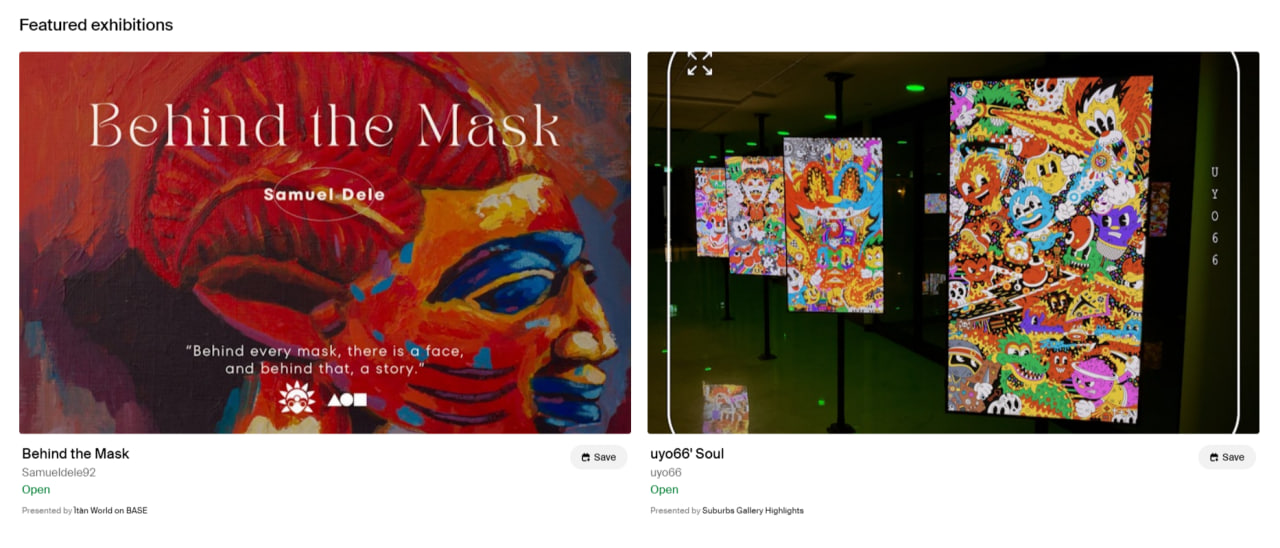
Advantages:
- Since NFTs on this platform are sold through auctions, it allows artists to set the starting price and receive fair payment for their work.
- Exclusive community of creators and collectors due to the strict selection of participants.
This approach attracts professional artists who value quality and want to present their works on a platform with a high level of reputation.
SuperRare
SuperRare specializes in high-quality digital art and offers carefully curated works from selected artists. This platform positions itself as a digital art gallery, where each piece undergoes strict selection before being placed. SuperRare is ideal for collectors looking for unique and valuable assets that are not just digital images but true works of art with high artistic and cultural value. The platform also integrates social features, such as activity feeds and artist profiles, facilitating interaction between users and community building.
Mintable
Mintable is a platform focused on ease of use, allowing users to create NFTs without the need for programming knowledge. This makes Mintable particularly attractive for beginners and those who do not want to spend time learning the technical aspects of token creation.
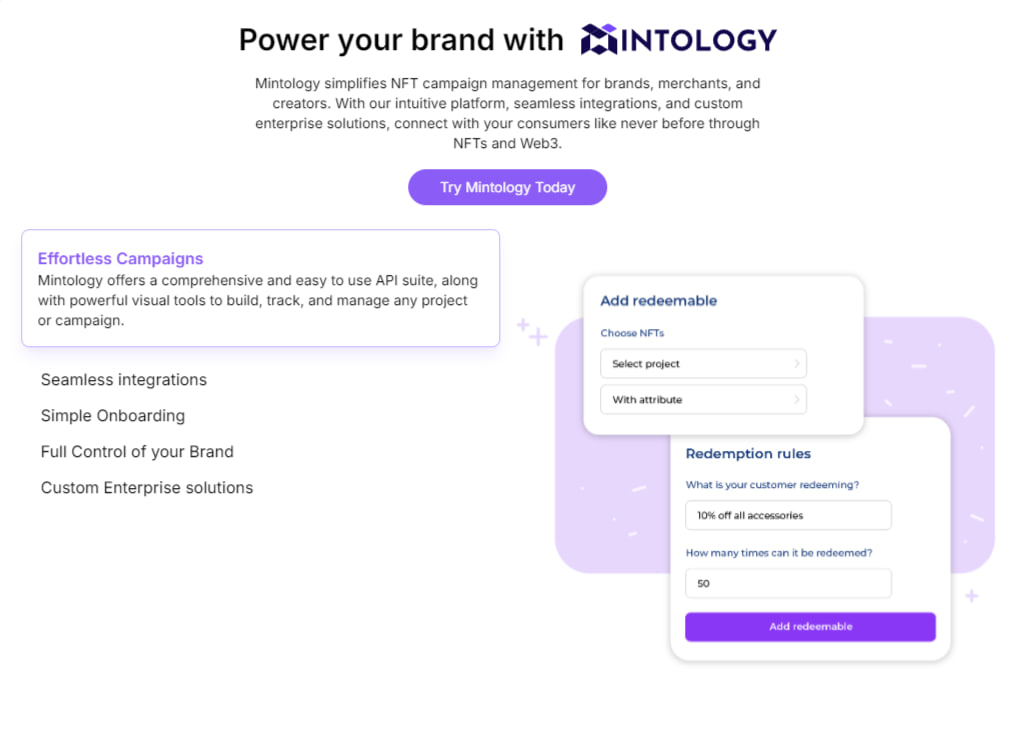
Advantages:
- No programming knowledge required
- Integration with multiple blockchains, allowing Mintable to expand its functionality and make it accessible to a wide audience
- A set of tools for promoting works
All of the platforms discussed play a crucial role in the development of the NFT market and offer unique opportunities for artists and collectors. Each of these platforms occupies its niche in the NFT ecosystem, and the choice of a specific one depends on the goals, needs, and preferences of the artist or collector. It is important to consider the features of each platform to maximize their potential and achieve success in the digital art world.
Advantages and Disadvantages of dApps
Decentralized applications, or dApps (short for "decentralized applications"), are software applications that operate on the blockchain and are independent of central servers or intermediaries. Unlike traditional applications, dApps function in a distributed network, providing a high degree of security, transparency, and resistance to censorship. These applications have changed the approach to creating, owning, and exchanging digital assets, especially in the NFT (non-fungible token) space, where they open up new opportunities for artists and collectors.
The platforms mentioned earlier, such as OpenSea, Rarible, Foundation, SuperRare, and Mintable, are prime examples of dApps that allow users to create, sell, and own NFTs. However, like any technology, dApps have their advantages and disadvantages, which should be considered when choosing a platform and working with it.
The table below highlights the main advantages and disadvantages of using decentralized applications (dApps) in the context of platforms for creating and trading NFTs. Understanding these aspects will help you better navigate the world of dApps and make more informed decisions.
| Advantages of dApps | Disadvantages of dApps |
|---|---|
| Transparency and Security Using blockchain ensures a high degree of transparency for all transactions and protects data from forgery and hacking. | Complexity for Beginners The need to understand the basics of blockchain and cryptocurrencies can be challenging for new users. |
| No Intermediaries dApps eliminate the need for traditional intermediaries (such as galleries or auction houses), allowing artists and collectors to interact directly. | High Fees on the Ethereum Network Many dApps, especially those running on Ethereum, suffer from high transaction fees, which can deter some users. |
| Independence and Censorship Resistance dApps operate in a distributed network, making them less susceptible to censorship and third-party interference. | Limited Scalability Due to the limited scalability of some blockchains, dApps may struggle to handle large volumes of transactions simultaneously. |
| Participation in Platform Governance Users can participate in platform governance, as seen with Rarible, where this is possible through token ownership. | Regulatory Challenges Regulatory uncertainty regarding cryptocurrencies and blockchain can pose legal risks for dApp users and developers. |
dApps provide users with extensive opportunities for secure and transparent interaction with digital assets, eliminating the need for intermediaries and offering a high degree of independence from external control. However, despite all the advantages, dApps also face several challenges, such as high complexity for new users and potentially significant transaction costs, especially on popular blockchains like Ethereum.
Ultimately, the successful use of dApps depends on understanding their capabilities and limitations, as well as the ability to choose the right platforms that align with your goals and needs.
The Impact of dApps on the Digital Art Market
Decentralized applications (dApps) have a significant impact on the NFT and digital art markets, becoming one of the main drivers of their development. These applications open up new horizons for artists, providing them with the ability to directly interact with a global audience, bypassing traditional barriers and intermediaries such as galleries and auction houses. Thanks to dApps, artists have gained tools that allow them to fully control the process of creating, distributing, and monetizing their works. This level of autonomy and independence would have been impossible under traditional art market models.
As blockchain expert Jack Lewis notes:
This expansion of opportunities leads to a significant increase in the number of artists actively participating in the digital market and an increase in the diversity of works presented on it.
Moreover, dApps contribute to the creation of new formats of interaction between artists and their fans. This is not just a technology for selling digital works but also a platform for forming entire communities around the creativity of individual artists. As artist and digital activist Emma Clark notes,
Thus, the impact of dApps on the digital art market is difficult to overestimate. They not only make this market more accessible and transparent but also create entirely new opportunities for interaction, creativity, and self-expression that were previously unavailable in the traditional art world. In the future, we can expect the role of dApps to only grow, contributing to the further development and democratization of digital art.
Platforms for creating NFTs based on dApps are radically changing the digital art market, opening up new opportunities for artists and collectors. Decentralized applications offer secure and transparent solutions for trading unique digital assets, eliminating the need for intermediaries and reducing costs. The influence of dApps on the market continues to grow, indicating further development and deeper integration of blockchain into the world of art. As technology advances and interest in NFTs increases, we can expect new platforms and models of interaction to emerge, which will continue to transform the industry.
